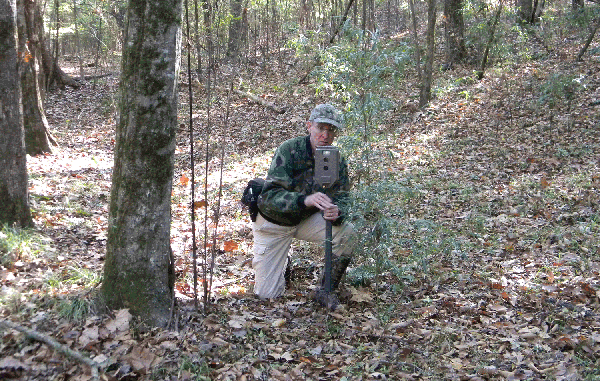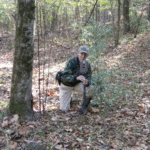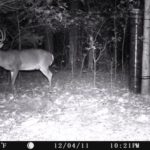
My excitement level is now building to a fever pitch as I plot and plan strategies for the soon-to-begin deer season.
Trail camera photos have been rolling in from my hunting property for a number of weeks, giving me a really good idea about the overall condition and demographics of my resident deer population. My current preseason trail-camera efforts are geared more toward knowing, deer wise, what exactly is out there.
As fall approaches, my personal emphasis will shift to patterning deer, especially mature bucks.
Just as it is so important to run deer cameras following the close of each season to see what bucks remain, it is equally important to perform an annual photographic evaluation during the succeeding preseason to inventory herd size and health, and to determine what resident bucks successfully summered over.
As a result, your annual doe harvest can be adjusted according to the available food supply and how many mouths you will have to feed on your property and see through the upcoming winter.
Advance planning for your food-plot acreage goes hand-in-hand with your anticipated doe harvest goal.
As deer hunters, we used to fly pretty much in the dark when it came to preseason planning, but deer cameras have revolutionized the science of deer study, making all of our individual hunting properties potential mini-laboratories. The beauty of this concept is that we all now have access to affordable, high-quality trail cameras, personal computers and associated equipment, and the boundaries of what information we each glean from their use is really only limited by our individual energies and willingness to experiment.
My personal deer-hunting journey that now spans more than 40 years can really be divided into two main phases: “before game cameras” and “after game cameras,” with my firsthand knowledge of whitetail deer movement and behavior having grown exponentially since the day that I obtained my first game camera. It is one thing to read about deer behavior in a magazine article or book, but it is quite another thing to see it up close and personal on your own hunting property as revealed through a season-long trail-camera effort.
To maximize success, every hunter and property manager should use all of the available data-gathering tools, which include trail cameras, eyeball observation and harvest data.
Eyeball observation only yields information during daylight hours on days when an observer is present, and is strongly influenced by such things as weather, food sources and hunting pressure.
Harvest data, though quite valuable in many respects, is limited to only harvested deer.
By contrast though, trail cameras are on duty 24/7, tirelessly gathering important, actionable information. In many ways, a web of properly placed and serviced trail cameras is remarkably like the military’s use of pilotless drones on the battlefield.
In my particular case, I place and use trail cameras to confirm that areas I have selected to hunt actually contain bucks or, on the other hand, contain quantities of breeding age does that will draw bucks during the rut.
Over the past five or six years, I have confirmed and documented through many thousands of trail-camera photos that there are basically three broad categories of bucks seen on my property during the deer season: resident bucks, range-shifters and expanders, and occasional travelers.
Resident bucks are as the name implies — bucks that reside on or use my property on a regular basis year-round. A description of where a particular buck resides would include the terms “home range” and “core area.”
By the use of GPS tracking collars, scientific studies of buck movement have shown that a buck’s home range would be where he spends 95 percent of his time. The term core area refers to the interior nucleus area of a home range where a given buck spends 50 percent of his time. During the summer, both home ranges and core areas are at their smallest, and they are conversely at their largest size during the rut.
Scientific research into seasonal short-term buck movement patterns has documented seasonal shifts in range use by bucks. My trail-camera data for my own property confirms this phenomenon, as my buck sightings ebb and flow with the calendar.
A seasonal range is a subset of a buck’s overall annual range.
I have bucks that are seen all season long and would by definition be termed resident bucks. I also have bucks that are only seen during the pre-season, and then vanish as the rut nears as they shift their range off of my property.
The real intrigue for me comes from the bucks that shift or expand their range onto my property from elsewhere during the rut, but are not seen at other times of the year. That class of buck reminds me of Forrest Gump and the box of chocolates: You never know what you are going to get.
And then, finally, there are the bucks that I refer to as occasional travelers that reside predominantly somewhere else and for whatever reason take off on an isolated, brief excursion that happens to coincide with my property. Their one-time visit can last for an hour or less, or they may hang around for a day or two and then vanish.
Your trail-camera efforts can yield great results when it comes to actionable intelligence regarding resident bucks and range shifter/expander bucks, but occasional traveler bucks will tease you with maybe a photo or two and then not be seen again during the season.
So get your web of game cameras set up this fall and see what interesting and helpful information you can decipher from your growing photo data bank.




